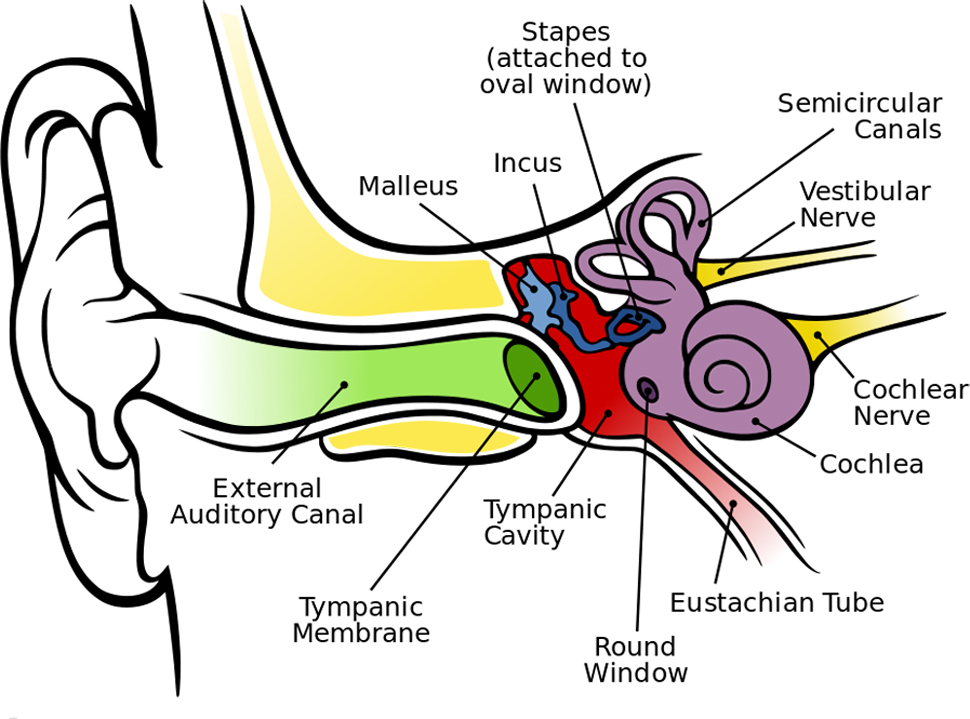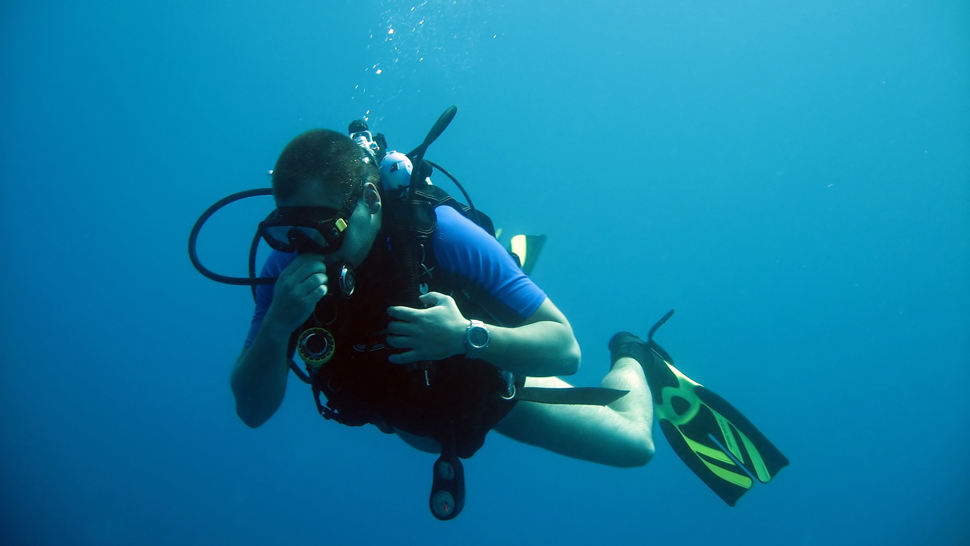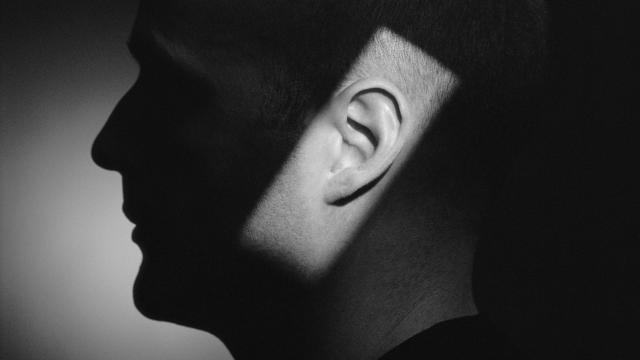Flying sick was a bad choice. Your congested ears refuse to pop and now you’re stuck on a cross-country flight, cruising at 9000m of ear-splitting agony. Here’s how to fix it.
Under Pressure
The surface of the Earth is covered in a thick atmospheric soup. Though only a fraction of the density of our oceans, the atmosphere behaves much the same way. Just as water pressure increases the deeper you go, air pressure increases the closer you get to sea level. In both cases, that’s because as you go deeper, you’ve got more and more air/water above pushing down on you.
We’ve evolved to be able to shrug off the weight of the atmosphere and our ability to hear actually requires it. See, sound waves are transmitted from the outer ear to the inner ear through the eardrum. This thin vibrating membrane acts as a barrier to liquids but allows atmospheric reverberations to pass through, however this requires that the air pressure on both sides of the eardrum be roughly equal.
Normally, equalising the pressure between the outer and middle ear is easy. Each inner ear is equipped with a small channel that runs down to the side of your throat known as a Eustachian tube. It’s designed specifically to facilitate air to escape from the inner ear into the throat, allowing you to equalise the atmospheric pressure on either side of the eardrum.
These tubes are attached to the tensor veli palatini muscles in your soft palate and are activated automatically whenever you yawn or swallow. That “pop” you hear is the sound of the pressure in your inner ear equalising.

Plane Drain
Now, when you’re in a rapidly climbing aeroplane, air pressure in the cabin will decrease while the pressure in the inner ear remains constant. This causes the eardrum to bulge outward. Conversely, if you were to go scuba diving, the increased pressure on the outer ear relative to the inner would cause the drum to bulge inward.
In both cases, your auditory capacity is reduced since the over-taught membrane doesn’t transmit sound as well, resulting in that stuffy, plugged up feeling you get before the pop.
The Eustachian tube will typically open on its own whenever you swallow hard but when you have a upper respiratory, infection the tubes might not open at all on account of your swollen throat. No open Eustachian tube means no pressure equalization means a really uncomfortable flight.

Some folks will attempt to simply overpower this swelling by holding their nose, closing their mouth, and blowing; forcing air from the lungs into the tubes and equalising the pressure. These folks don’t much like their eardrums.
Not only is there the very real chance of blowing too hard and tearing the eardrum itself, you can very well also blow all that infected mucus that’s draining down your throat into the Eustachian tubes and give yourself a raging middle ear infection.
The Fix
Instead, drop a couple of decongestants before you take off to reduce the amount of snot running into your throat. As you feel the pressure beginning to build do the following:
- Hold your nose, close your mouth
- Turn your head to the right until your chin touches your shoulder
- Swallow hard until your left ear pops
- Turn your head to the left until your chin touches your shoulder
- Swallow hard until your right ear pops
- Continue doing this until you reach cruising altitude and start again as the plane begins its approach
That’s it. Your ears should have popped and you are now free to enjoy the rest of your flight — at least until the baby in row 15 starts crying again.
[MSU – Wikihow – Physlink – Top image: graph / Shutterstock, ear diagram: Perception Space, diver: Elisei Shafer / Shutterstock]
This article has been updated since its original publication.
